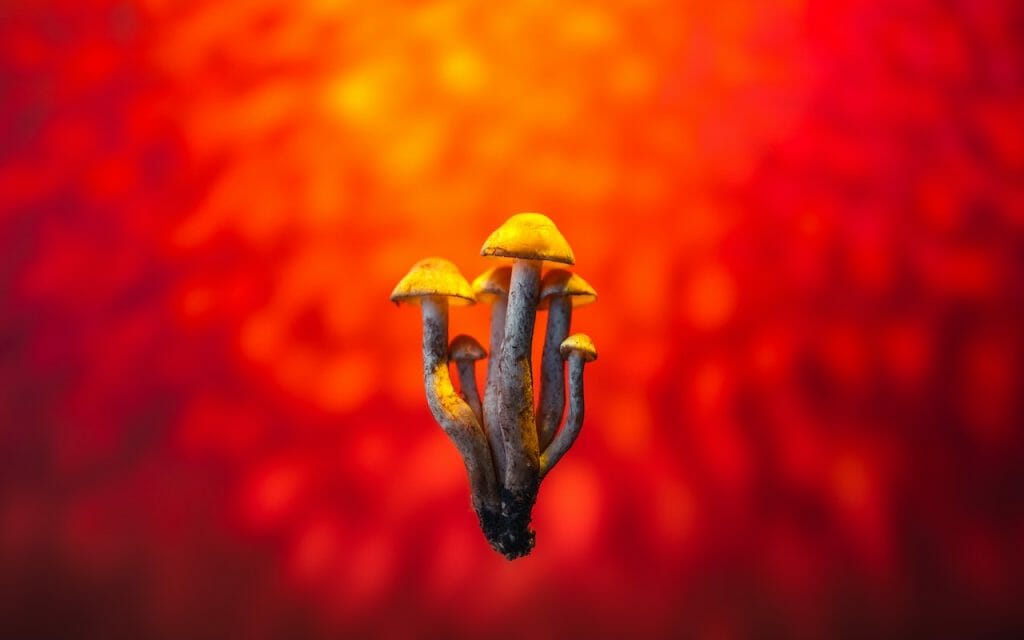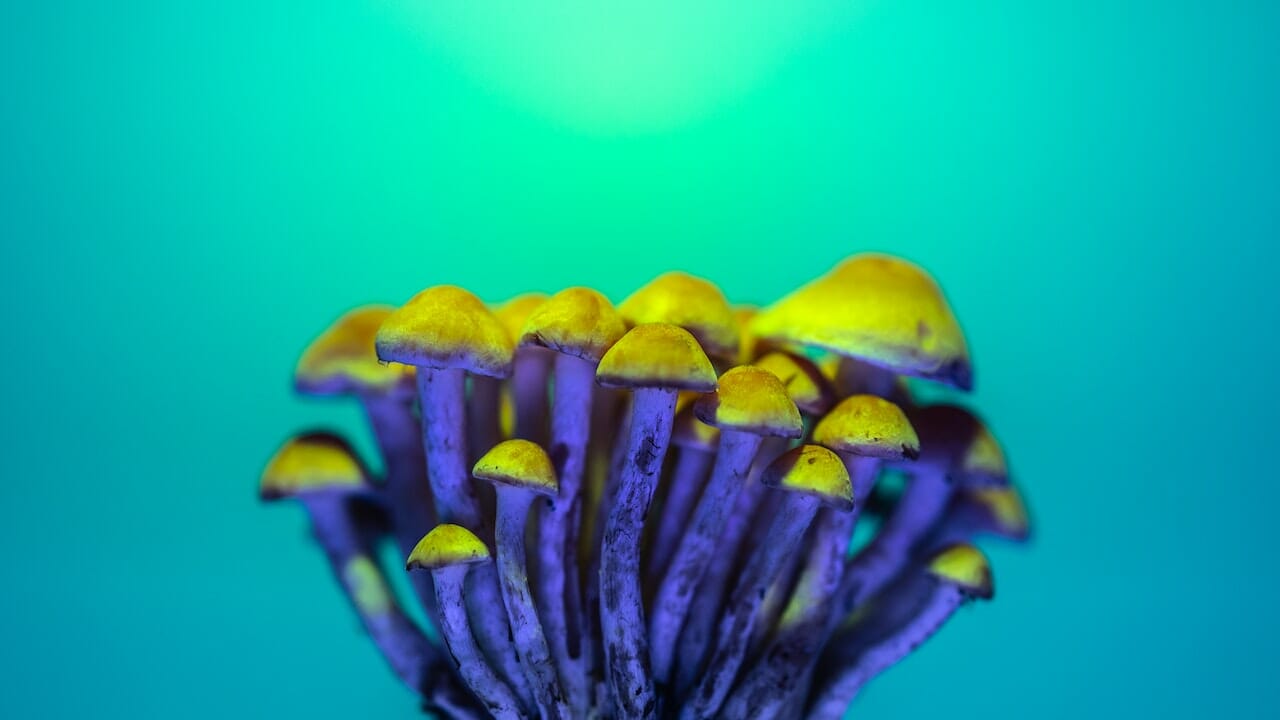LSD (lysergic acid diethylamide), a potent hallucinogen, has been thoroughly researched as one of the most powerful psychedelic substances. Initially renowned for its recreational effects, LSD has evolved into a psychoactive element that holds promising mental health benefits. This shift in perspective has paved the way for further research into the effects of LSD in more accessible forms such as LSD edibles.
Key Takeaways:
- LSD, a powerful hallucinogen, originates from the ergot fungus.
- LSD shares similarities with psilocybin and interacts with the 5-HT2A receptors.
- LSD can induce visual alterations, mood swings, dissolving of self-identity, and pseudo-hallucinations.

Deciphering LSD
LSD is an exceptionally potent hallucinogen with the ability to drastically modify an individual’s perception of reality and significantly skew the senses. LSD originates from “ergot,” a fungus that grows on rye and other grains.
On a molecular scale, LSD is a sophisticated chemical belonging to the ergoline family, featuring a bicyclic hexahydroindole group and a bicyclic quinoline group (lysergic acid). Its name ‘Lysergic Acid Diethylamide’ is derived from the functional group attached to its core. The structure of LSD mirrors other ergoline alkaloids, including ergotamine found in the Claviceps purpurea ergot fungus, and the neurotransmitter serotonin.
LSD’s Influence
Upon consumption, LSD penetrates the brain, inciting chemical reactions that can persist for numerous hours. LSD can induce the following short-term effects:
- Unpredictable mood fluctuations
- Distortion of perception
- Feeling of dizziness
- Decreased appetite
- Compromised motor control
The Advantages What Are the Benefits of LSD Use?
The use of LSD comes with a variety of advantages, the extent of which greatly depends on the dose consumed. Most studies concentrate on the positives arising from taking smaller doses of this psychedelic substance. In the following sections, we’ll explore the beneficial aspects of LSD use.
Pain Management and Neurological Growth
Research conducted by Maastricht University scientists discovered that a single microdose of LSD can produce analgesic effects that last for a minimum of five hours, sometimes more.
In a test called the Cold Pressor Test, where subjects are asked to immerse their hands into 3°C (37.4°F) water for as long as they can bear, those who had consumed 20 mg of LSD were able to keep their hands submerged 20% longer than those who hadn’t. They also reported feeling less pain and discomfort.
Furthermore, LSD can play a role in the development and proliferation of the brain’s 86 billion neurons. Moderate LSD doses, ranging from 5 to 20 ug, increase the BDNF levels in blood plasma. This is crucial as mood disorders like depression, often associated with neuroplasticity problems, may be improved due to LSD’s beneficial impact on neuronal health.
Improvement of Mental Health
Dr. Robin Carhart-Harris from Imperial College London introduced the entropic brain hypothesis. This idea posits that mental health disorders are rooted in rigid thought processes, perpetuated by an overly active default mode network (DMN). Psychedelics like LSD possess the capacity to disrupt the DMN, enhance brain entropy, and aid in dismantling detrimental neural pathways while promoting the creation of beneficial ones.
A study involving more than 1,000 individuals who microdosed reported a decrease in depression. Another extensive cross-sectional study indicated a decrease in negative emotions and harmful attitudes, along with an increase in open-mindedness and cognitive abilities.
Remedy for Addiction
A meta-analysis of randomized-controlled clinical trials employing LSD in psychiatry revealed its greatest efficacy in the treatment of alcohol dependence. This conclusion is further backed by the positive results seen in numerous patients treated for alcoholism by Humphrey Osmond and at the Spring Grove Hospital Centre during the 1950s and 1960s.
Relief from End-of-life Anxiety and Depression
Dr. Peter Gasser’s research has indicated that LSD-assisted psychotherapy can provide relief for terminally ill cancer patients coping with end-of-life related anxiety. The therapy has also been shown to enhance the subjective quality of life. Currently, a Phase 2 trial is underway to explore the potential benefits of LSD therapy for depression.
Deciphering LSD Edibles: Their Components and Manufacturing Process
LSD edibles are food and beverage items incorporated with the hallucinogenic substance LSD. These edibles come in a variety of forms, including chocolates, candies, baked goods, and even unique products like LSD mints.
Ingredients Breakdown
- LSD: This active compound is responsible for the hallucinogenic effects. It’s carefully measured and integrated into the edible.
- Edible Base: The LSD is generally dissolved or mixed into an edible medium such as a gummy, candy, sugar cube, or other ingestible items. These mediums act as the delivery system for the hallucinogenic compound.
- Flavouring and Ingredients: The specific edible product may contain flavourings, sweeteners, and other ingredients to enhance taste and texture. These can include natural or artificial flavourings, colours, and sugars, and can vary widely.
Manufacturing Process:
- LSD Synthesis: The first step is the chemical production of LSD. This process requires a deep understanding of organic chemistry and access to the necessary chemicals, equipment, and a laboratory environment.
- Liquid Formulation: Once the LSD is synthesized, it’s typically turned into a liquid form by dissolving it in a solvent. This solution serves as a concentrated LSD solution.
- Infusion: The liquid LSD is then infused into an edible base such as gummy candies, sugar cubes, or blotter paper. The infused base absorbs the liquid, facilitating oral consumption of the LSD.
Experiencing the Psychedelic Impact of Psychoactive Compounds in LSD Edibles
LSD results in profound visual effects. Colours may appear more vivid, objects may seem to have halos or rainbows around them, and shapes can undergo transformation. Regardless of whether the user’s eyes are open or closed, they may see
Vibrant, rapidly changing geometric patterns and other visual distortions are common effects of LSD. These effects are known as “pseudo-hallucinations” as users recognize that they’re not real, but a consequence of the drug’s impact.
LSD can significantly alter one’s perception of themselves and their environment. It can induce different mental states where thoughts can either be clear and profound or lack any logical connection. Other potential effects include altered perception of time, distance, and body image. The boundary between self and the external world may appear vague. Some users have reported experiencing synesthesia, such as hearing colours or seeing sounds.
Suggested LSD Products
There is a wide range of LSD edibles available, but it’s critical to purchase from a trustworthy dispensary. You must ensure that the edibles contain LSD and not other substances like PCP (embalming fluid), ecstasy, or ketamine.
Deadhead Chemist – LSD Infused Gummies
Deadhead Chemist offers LSD-infused edibles, each containing 100 micrograms (ug) of LSD, in a range of flavours. Each package contains a single gummy, which has shown promise in aiding those with conditions such as obsessive-compulsive disorder (OCD), post-traumatic stress disorder (PTSD), alcohol addiction, depression, and cluster headaches.
Deadhead Chemist – Mint Tea
Deadhead Chemist’s raspberry mint tea provides a tastier and more flavourful way to experience the effects of LSD. LSD and other psychedelics imitate the serotonin neurotransmitter, enhancing the brain’s flow state.
Earthly Delights – Candy Flips
Candy flipping became popular during the late 1980s rave culture. Today, thrill-seekers and party-goers continue to appreciate the remarkable combination of these two substances. Users frequently experience deep feelings of love and interconnectedness, along with captivating visual effects such as enhanced colours, object transformations, and complex geometric patterns.
Concluding Remarks
LSD has been historically linked to transformative experiences. The increased scientific understanding of this substance has only heightened its popularity, and now, with the advent of LSD edibles, there is a fresh avenue for people to explore. These delicious goodies have become a hit.
Experiment safely and pleasurably with LSD in controlled doses.
As the leading supplier of high-quality shrooms online in Canada, Mushroom Coffee Canada brings to you a vast array of LSD-infused edibles and cannabis products. Take your time to peruse our collection, add your desired items to your cart, and sit back as we handle the delivery. We also showcase an extensive selection of psilocybin shrooms, edibles, beverages, and capsules for your convenience. Make sure to check out our LSD delivery page for additional information!
Frequently Asked Questions
How does LSD differ from psilocybin?
FEATURES LSD PSILOCYBIN Origin Semi-synthetic chemical compound Naturally occurring in fungi Available Forms Tabs, microdots, liquid, gummies, blotter paper Dried mushrooms, capsules, teas, chocolates Potency Highly potent, dosed in micrograms (ug) Depends on the species of mushroom and its preparation Onset and Duration Quick onset (15-60 minutes), short duration (3-5 hours) Gradual onset (30-60 minutes), moderate duration (4-6 hours)
How can one avoid negative experiences with LSD?
- Choose Your Environment Wisely
- Set Your Mindset
- Start with a Small Dose
- Secure a Trip Supervisor
- Create a Relaxing Atmosphere
- Practice Deep Breathing and Grounding Techniques
- Accept and Let Go
How long do the effects last?
The effects of the acid usually start to kick in between 30-60 minutes post ingestion. Those with a heightened sensitivity to psychedelics may start to feel the effects Within just 15 minutes, you will begin to feel the effects of acid. It will become more noticeable after about an hour. The most intense part of the trip will likely occur around three hours into the experience. During this time, you may feel like time is slowing down and you might experience hallucinations.
Hold on tight, feeling disconnected from reality is not unusual during this phase. The peak phase typically lasts between 3 to 5 hours, followed by a come-down phase that also lasts for about 3 to 5 hours.
How does LSD interact with the human body?
LSD mainly interacts with the brain’s serotonin system. It does so by binding to and stimulating the 5-HT2A receptor. This interaction initiates a chain of neurochemical and physiological responses. Various factors can influence the effects of LSD, which can differ significantly.
Are there variations of LSD other than edibles?
Yes, LSD is available in various forms. The four primary types of LSD products consist of blotter paper, liquid solutions, tablets or microdots, and gelatin squares.
Further Reading:
| FEATURES | LSD | PSILOCYBIN |
| Origin | Semi-synthetic chemical compound | Naturally occurring in fungi |
| Available Forms | Tabs, microdots, liquid, gummies, blotter paper | Dried mushrooms, capsules, teas, chocolates |
| Potency | Highly potent, dosed in micrograms (ug) | Depends on the species of mushroom and its preparation |
| Onset and Duration | Quick onset (15-60 minutes), short duration (3-5 hours) | Gradual onset (30-60 minutes), moderate duration (4-6 hours) |





